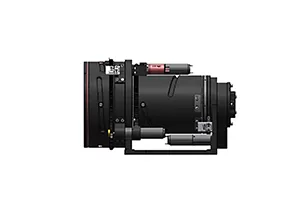Achromatic lenses are lenses composed of two optical components with positive and negative refraction indexes, respectively. Compared to a single lens made of only one piece of glass, a double lens design provides users with additional design freedom and further optimizes the lens performance. Therefore, achromatic lenses offer more significant advantages compared to single lenses with equal diameter and focal length.
Achromatic lenses are available in various configurations
Common types of achromatic lenses include positive achromatic lenses, negative achromatic lenses, three-piece achromatic lenses, and aspheric achromatic lenses. It is important to note that achromatic lenses can be composed of either two or three components, and the number of components is not related to the amount of light being corrected. In other words, dual or triple configurations of achromatic lenses can correct red and blue light within the visible spectrum.
Researchers have introduced a new technology that offers a non-spherical lens providing excellent image quality and precision color correction. The cost-effective aspheric achromatic lens corrects for chromatic and spherical aberrations and meets the demanding imaging requirements of today's optical and vision systems. With the assistance of an aspheric achromatic lens, relay systems, spot-lighting systems, high numerical aperture imaging systems, and beam expanders can be improved.
Achromatic lenses improve multi-colored light imaging
Achromatic lenses have better imaging with multi-colored light sources, compared to traditional lenses. By combining two components to correct the inherent glass chromatic aberration, achromatic lenses can effectively eliminate difficult-to-resolve aberrations, making them highly cost-effective for multi-colored lighting and imaging.
Achromatic lenses correct for spherical and axial comatic aberration
Correction for aberrations such as spherical and comatic aberrations enhances the axial performance of lenses with larger apertures. Compared to simple lenses, achromatic lenses consistently provide smaller-sized spots and superior imaging performance without compromising the light-gathering aperture.
Achromatic lenses provide clearer imaging and superior energy throughput
Since the axial performance of a achromatic lens is not degraded with a larger light-gathering aperture, it is unnecessary to "shrink" the overall optical system. Shrinkage of the aperture refers to reducing the size of the lens aperture, such as using a pinhole or an iris diaphragm, to improve the overall lens performance. By fully utilizing the entire aperture, achromatic lenses and lens systems achieve faster speeds, higher performance, and greater functionality compared to equivalent systems using single lenses.


















 EN
EN





